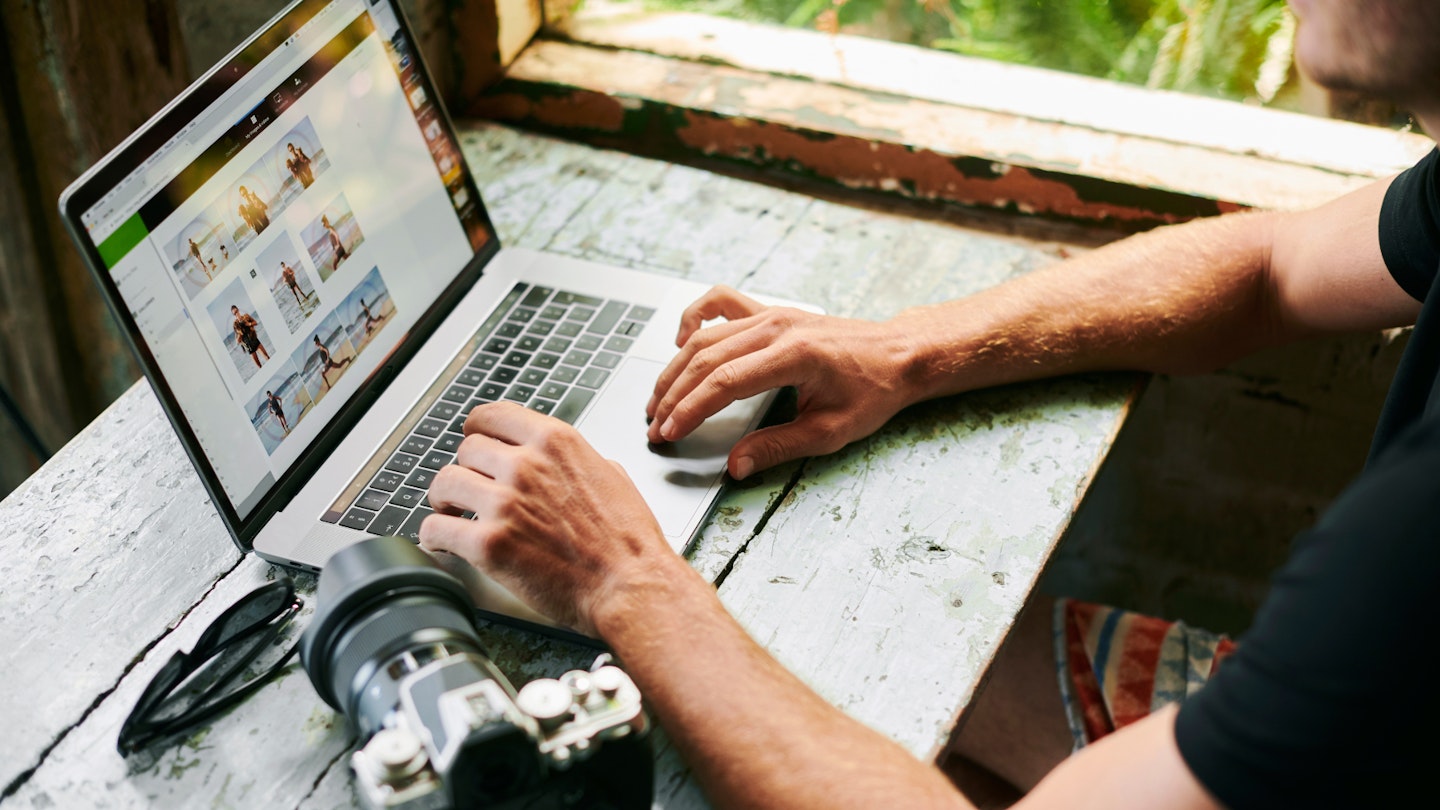Every modern photographer needs the right gear to get the best results - and now that includes having one of the best laptops in your kit bag. Whether you're planning on editing your shots in the comfort of your home or out and about on a shoot, one of the best laptops for photo editing is an essential tool. Both novices and seasoned snappers will want to get the best out of their hobby, but with so many laptops on the market, which one is up to the job?
You might be familiar with applications like Adobe Lightroom, Photoshop or Capture One for all of your essential image correction tools. But they do need a decent machine to run on, especially if you're planning on getting creative with touch-up tools and heavier image editing. We're here to help you narrow the depth of field and focus on what really matters when it comes to choosing the right photographer's laptop.
Best laptops for photo editing of 2024 at a glance:
As with all tech, the more you can afford to spend on better components the longer it will last. As laptops are the ultimate mobile photo-processing tool, you'll also want to make sure that whatever model you choose is robust and up to being lugged around - durability is key, especially for photographers who like to take all of their kit out on a wildlife spotting or scenic trip.
The good news is that for light image correction duties, you don't need to spend a fortune. If a budget laptop has 8GB of RAM and an Intel i7 or equivalent mid-range processor you should be able to run the simpler apps like Adobe Lightroom. But if you're all about being able to heavily edit several images in RAW formats or huge resolutions at once, we recommend at least 16GB of RAM and a large storage drive - a 1TB SSD is best - for your apps and files. Just as with the best laptops for video editing, the screen quality is paramount - with good viewing angles, contrast and accurate, vibrant colours.
So, let's open the aperture a little and frame up some of the best laptops for photographers on the market today. We've also included a buyer's guide and more at the end of the article to help you choose.
How do we test laptops?
If you're wondering how we test laptops, we trial them out for several weeks, making sure to use them day in and day out. During our testing, we pay close attention to the CPU and GPU performance, as well as the RAM and storage. We also observe the battery life, as well as how well the laptop performs with multiple intense applications open at once. If it's a gaming laptop, we note how well it runs modern games. As we test, we also take photos along the way.
Once we've concluded our testing, it's time for the review itself. Along with discussing our findings, we rate the laptop on a set of criteria of its build, design, and overall value for money.
Best laptops for photo editing in 2024
All prices are correct at the time of writing. Prices, stock and deals are subject to change without notice.
Best overall
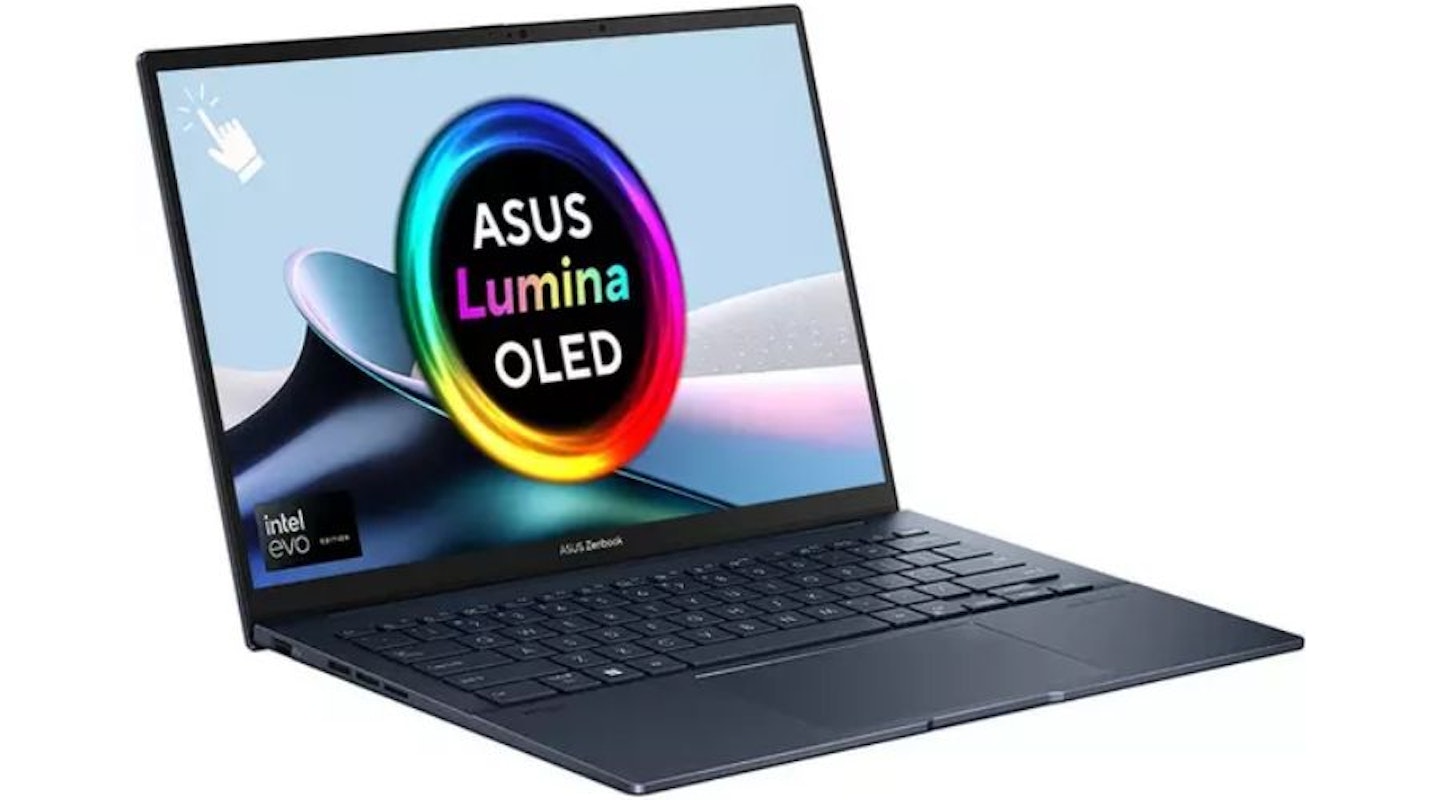 ASUS
ASUSThe OLED display certainly didn’t pass us by in our review of the ASUS Zenbook 14 OLED laptop. Considering that this machine comes with an ASUS Pen and touchscreen, photo editors will love the sheer number of ways to use it. We particularly love the clarity of the screen for high-resolution images. They have exceptional true-to-life vibrancy and deep blacks - perfect for editing high-quality photographs.
Equipped with an Intel i7 processor, 32 GB of RAM, and a 1TB SSD, it excels in handling complex photo editing tasks. Altogether, apps like Photoshop and the like work smoothly and accurately. It is worth mentioning though that anyone who already uses a pen and art tablet might not like the feel of using the ASUS Pen on the glassy screen.
With a decent battery life and lightweight yet sturdy build, the ASUS Zenbook 14 OLED stands out as our best pick for photo editors in search of a powerful yet portable creative tool.
Pros
- Stunning OLED touch screen for accurate colours and vibrancy
- Comes with the ASUS Pen for use on the touchscreen - ideal for use with pressure-sensitive tools in Photoshop
- Super-fast processor and 32GB of RAM means you’ll be editing with speed and precision
Cons
- The ASUS Pen is great, but those who are used to a standalone tablet will probably prefer that over the glass screen
| CPU | Intel Core Ultra 7 Processor 155H 3.8GHz |
| GPU | Intel Arc Graphics (Intel Arc 8-Cores iGPU - ID 7D55) |
| RAM | 32 GB |
| Storage | 1TB M.2 NVMe SSD |
| Display | 2880 x 1800 pixels, 14.0-inch OLED touchscreen |
| Battery life | Approx 8 hours |
| Dimensions | 31.24 x 22.01 x 1.49 ~ 1.49 cm |
| Weight | 1.28 kg |
Best budget
 ASUS
ASUSWe think that this ASUS Vivobook 15 is a superb laptop for the money - making it one of the best budget laptops of the year. Despite only having a Full-HD resolution screen, under the chassis of the ASUS Vivobook 15 is a reliable Intel i7-1255U CPU, 16GB of RAM and 512GB of SSD storage, giving you plenty of hardware potential to adjust your photographs. It may not be a total powerhouse, but it'll run apps like Adobe Lightroom. It's hardy too, sporting military-grade durability - making this ideal to throw in with your camera gear for trips away.
As a laptop under £500, the value of the ASUS Vivobook 15 is undeniably excellent, but if you are on a very tight budget you could go for the same model with 8GB of RAM which is fine for light editing tasks.
Despite having a slightly no-frills design and plain aesthetic - we cannot deny how much value this is for the money - especially considering you have that 15.6-inch display to work on.
Pros
- A healthy mid-level specification for running editing applications
- Military-grade durability means it's a stress-free laptop to take with you
- The 15.6-inch display is a great size for editing your shots
Cons
- Only Full-HD resolution
| CPU | Intel i7-1255U |
| GPU | Intel HD Graphics 600 |
| RAM | 16GB |
| Storage | 512GB PCIe SSD |
| Display | 15.6-inch Full HD |
| Battery life | 8 hours |
| Dimensions | 48.29 x 29.4 x 6.6 cm |
| Weight | 2.66 kg |
Best lightweight
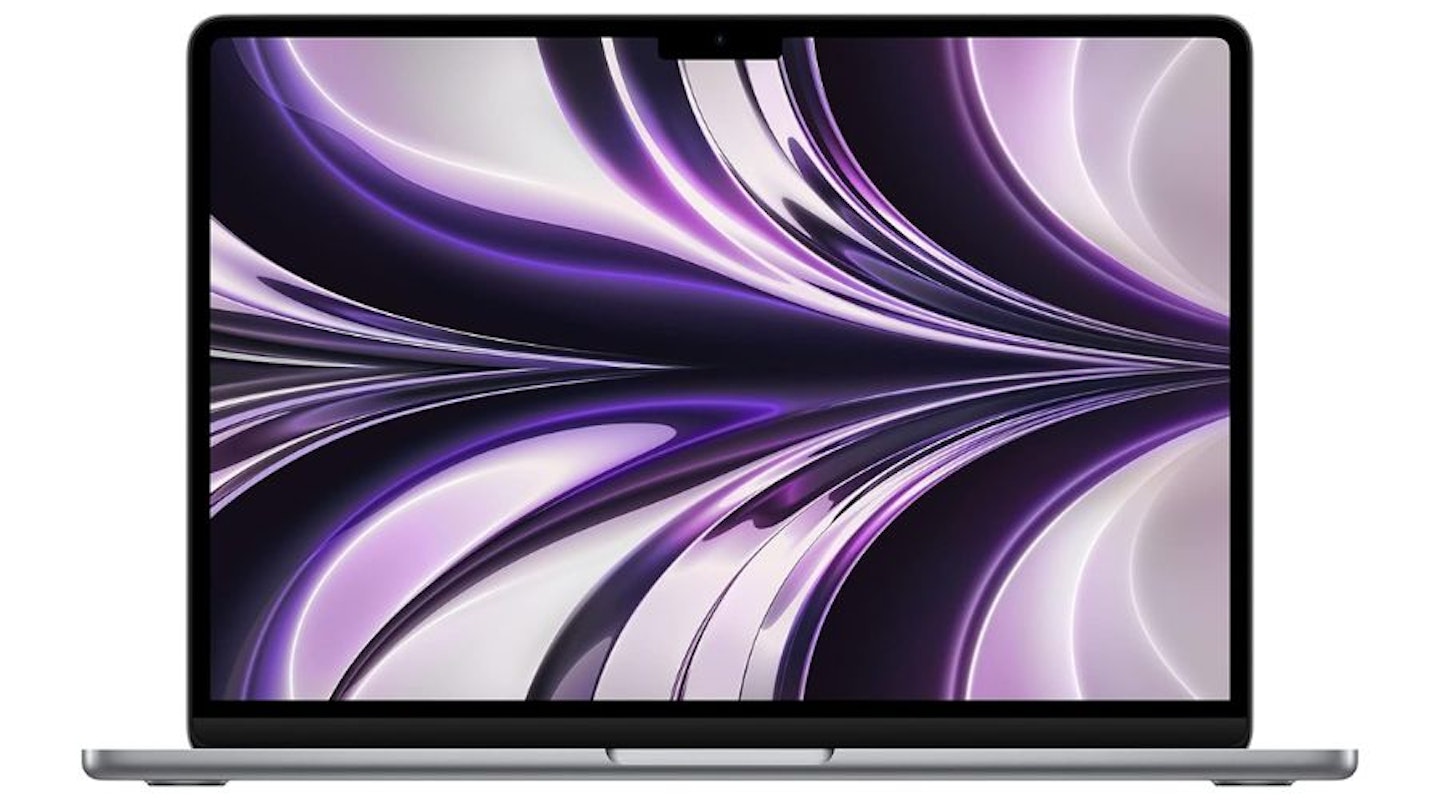 Apple
AppleThe 2022 MacBook Air may be a couple of years old, but it represents a typically compact design that balances computing power and affordability. When it comes to portable photo editing. The M2 processor is more than capable of handling these needs, despite not having the latest M3 chip.
Its portability and remarkably slim profile truly live up to the 'Air' moniker. With a weight of just 1.24 kilograms, it's astonishing how Apple has managed to pack a 13.6-inch Liquid Retina display, 8GB of RAM, and 256GB of SSD storage into such a slender frame. We think you'll need to invest in a large external storage drive though, as this is a little light on space.
But, how good will this be for editing your photos? Well, we're happy to see that the 8-core CPU, integrated GPU, and 8GB of unified memory can run your choice of mid-level image editing applications. Apple's usual array of extras are onboard too, such as the FaceTime HD camera, a three-microphone array for crystal-clear audio, and a quad-speaker surround sound system. Additionally, the MagSafe charging port simplifies connectivity, eliminating the hassle of cable management. Take this little beauty with you on your next photography trip and you'll hardly notice you're carrying it.
Pros
- Impossibly light at just 1.24 kg - take this anywhere and never break a sweat
- The M2 chip is still right up there for speed and performance
- The display is Liquid Retina, so expect bright and vibrant visuals
Cons
- Invest in an external storage drive - this only has 256GB of internal space
| CPU | M2 - System on Chip (SoC) Apple M2 chip 8-core CPU with 4 performance cores and 4 efficiency cores 16-core Neural Engine |
| GPU | Apple M2 chip |
| RAM | 8GB |
| Storage | 256GB SSD |
| Display | 13.6-inch Liquid Retina, 2560-by-1664 native resolution |
| Battery life | Up to 18 hours |
| Dimensions | 1.13 x 30.41 x 21.5 cm |
| Weight | 1.24kg |
Best mid-budget
 ASUS
ASUSWhen it comes to innovation, performance and convenience, we think you can't do much better than the ASUS Zenbook Duo. It's a real contender for the ultimate photo editing laptop thanks to its brilliantly innovative dual touchscreen design. If you like to tweak and adjust your shots without various panels getting in the way, that slim second display just above the keyboard is what you've been waiting for. Design-wise, the ASUS Zenbook Duo is something of a looker too, with a robust yet lightweight chassis and a premium feel.
Spec-wise this is certainly no lightweight. Multitasking has never been smoother and more seamless thanks to the Zenbook Duo's Intel i7 CPU and 16GB of RAM. All in all, that means a super-fast response time for any photo editing program you choose. But, in the end, we're drawn back to the Zenbook Duo's dual-screen design.
Designed with creative professionals in mind, it tilts up to seven degrees for ease of use. You can control your photo effects simply and effectively with phenomenal precision - although the second screen may take some getting used to, as it's oriented horizontally. And they're touchscreens too, giving you even more direct control. The added ASUS Pen is a welcome addition for any in-depth image editing.
Pros
- Innovative dual-screen design makes for faster, easier image editing
- A solid mid-range spec with enough power to run professional image applications
- The included ASUS Pen gives photographers extra creative editing control
Cons
- The second screen may take some getting used to
| CPU | Intel i7-1195G7 |
| GPU | Intel integrated |
| RAM | 16GB |
| Storage | 1TB SSD |
| Display | 14-inch full-HD dual touchscreen |
| Battery life | Up to 12 hours |
| Dimensions | 32.4 x 1.73 x 22.2 cm |
| Weight | 1.57 kg |
Best FHD
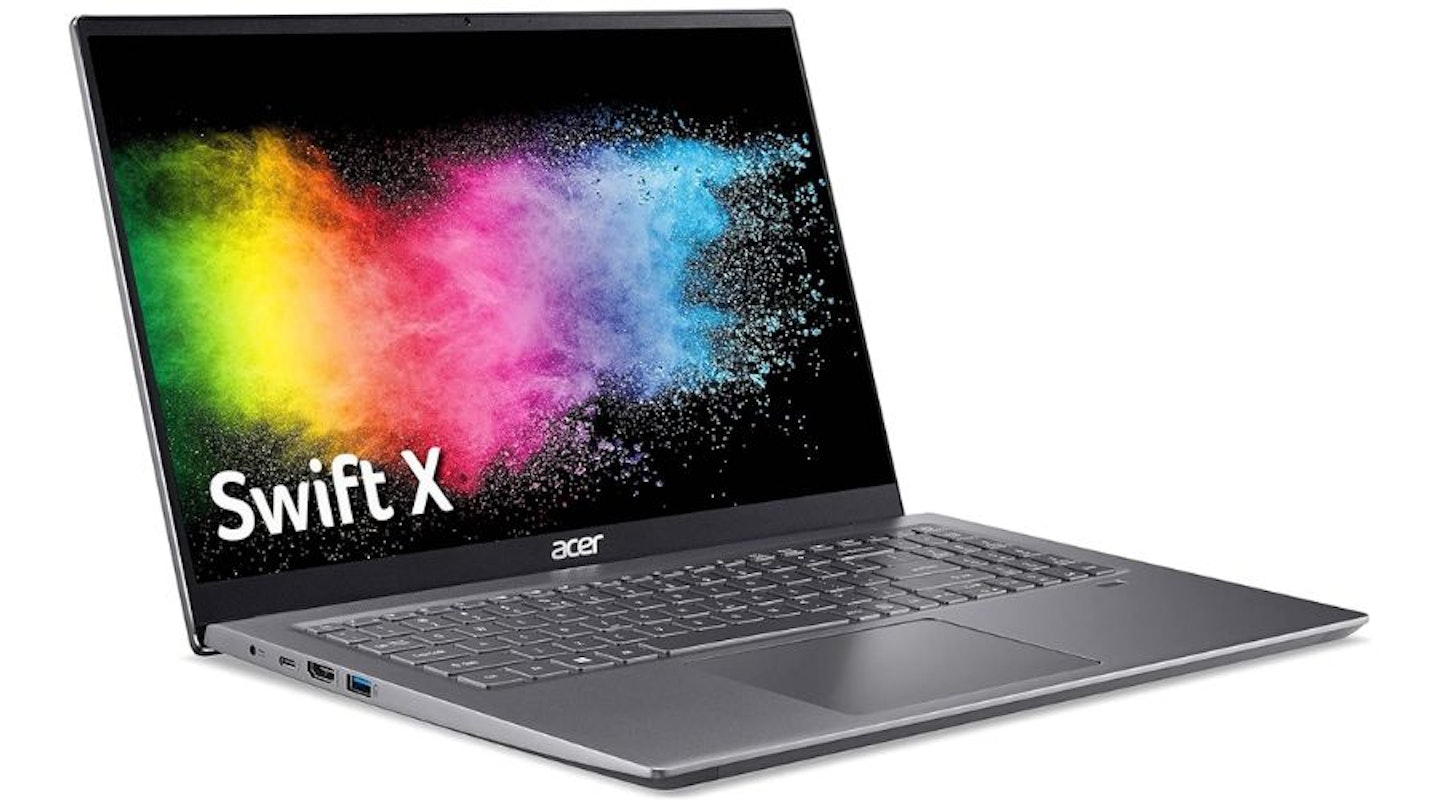 Acer
AcerAlthough this isn't the only FHD laptop on our list, we think it represents the best value compared to our high-end photo editing laptop choice. The Acer Swift X is a 16-inch machine with some serious power to bring to your applications and more. With a solid 512GB SSD for super-fast load speeds and storage, the Intel Core i7-11390H CPU and 8GB of RAM only serve to speed things up even more. But, it's the stunning screen that really delivers for photographers here.
The stated battery life of 7.5 hours is a little below average though, so plan your power needs accordingly if you're planning on taking this off-grid on a shoot. Power aside, editing your high-res shots on a screen this good is a must-have for all serious photographers.
Pros
- A brilliant FHD display with colour and contrast accreditations - ideal for accurate and detailed editing
- The excellent specification for RAM and CPU will power your favourite photo editing applications
- Lots of fast storage with the 512GB SSD - install your applications and still have room left over for your shots
Cons
- The battery life is average at best
| CPU | Intel Core i7-11390H |
| GPU | NVIDIA GeForce RTX 3050 |
| RAM | 8GB |
| Storage | 512GB SSD |
| Display | 16-inch |
| Battery life | 7.5 Hours |
| Dimensions | 35.67 x 1.39 x 24.23 cm |
| Weight | 1.9 kg |
Best Mac
 Apple
AppleIf there's something that Apple continually gets right it's their proprietary integrated chips that power their laptops. This 2024 MacBook Air has the latest M3 chip with its 10-core GPU and 16-core neural engine for AI-driven power.
Install your favourite image editing applications on this and you'll enjoy a seamless and smooth experience. And that 15-inch Liquid Retina display can support over a billion colours, so you can always be assured of colour accuracy. It runs as quad-HD resolution too, so it's ideal for working on those detailed high-res shots. Apple claims that the battery life is an astounding 18 hours under average use, but we think that you should expect less when using intensive photo editing applications.
As Apple Macs go, for us this one strikes the right balance between price and functionality when it comes to editing photos on the go.
Pros
- Beautiful Liquid Retina Display at Quad-HD resolution for tonnes of detail and colour accuracy
- Robust and classy Apple design and build
- Amazing battery life - take this with you on your trip and it'll last the day
Cons
- You'll need to invest in an external SSD for storing all of your high-res photos
| CPU | Apple M3 chip, 8-core CPU, 10-core GPU, 16-core Neural Engine |
| GPU | Apple M3 Chip |
| RAM | 8 GB |
| Storage | 256 GB SSD |
| Display | 15.3-inch Liquid Retina display - Quad HD 2880 x 1864p |
| Battery life | Up to 18 hours |
| Dimensions | 1.1 x 34 x 23.6 cm |
| Weight | 1.51 kg |
Best tablet-style
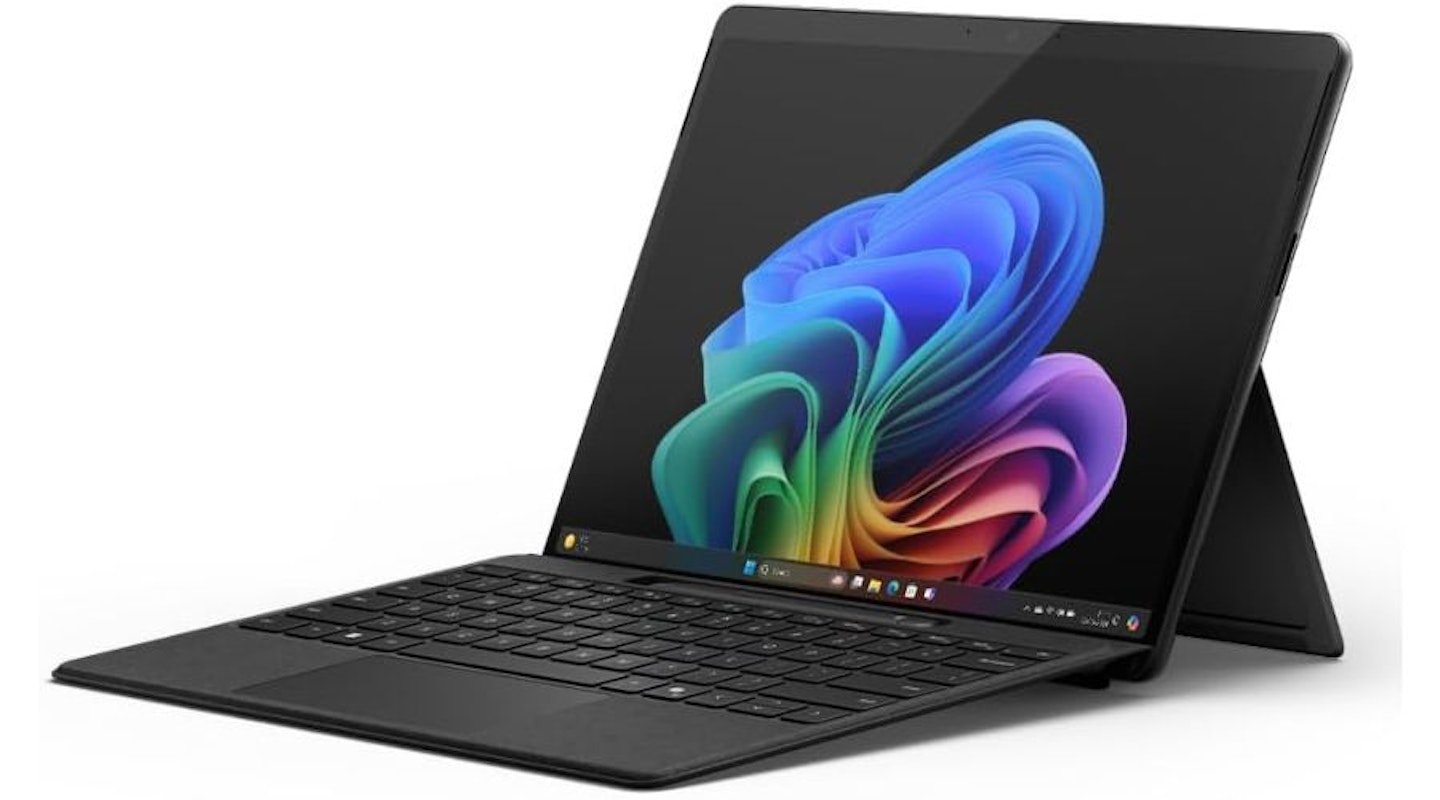 Microsoft
MicrosoftIf you're hovering between getting a tablet for the portable touchscreen experience, and a laptop with serious power and impressive battery life, the Microsoft Surface Pro (11th edition) is for you. We love the way this can transform into a standalone tablet with a stylus for more hands-on convenience.
But it's the internal spec that really steals the show here - as it may look like a tablet, but it's a laptop on the inside. As it's running Windows 11, you can expect to install your favourite professional photo editing apps. Best of all, you have a 10-core Qualcomm Snapdragon X Plus CPU and a massive 16GB of RAM to play with.
All that said, where this is more like a tablet than a laptop is the screen size - at just over 13 inches it may take some getting used to for those who are used to editing on a PC. But, if you're happy to have a more portable photo editing studio in your bag, the Surface 11 is for you.
Pros
- The detachable keyboard and stylus make this a practical tablet-laptop hybrid
- The internal spec is definitely not a tablet - it's a powerful laptop inside
- The touchscreen gives you even more control over your image-editing apps
Cons
- The 13-inch screen may be a little cramped for some compared to most laptops
| CPU | 10-core Qualcomm Snapdragon X Plus |
| GPU | Qualcomm Adreno |
| RAM | 16GB |
| Storage | 256GB, 512GB |
| Display | 13 Inches, 2880 x 1920 Pixels |
| Battery life | 14 hours |
| Dimensions | 28.7 x 20.9 x 0.93 cm |
| Weight | 895 g |
Best high-end
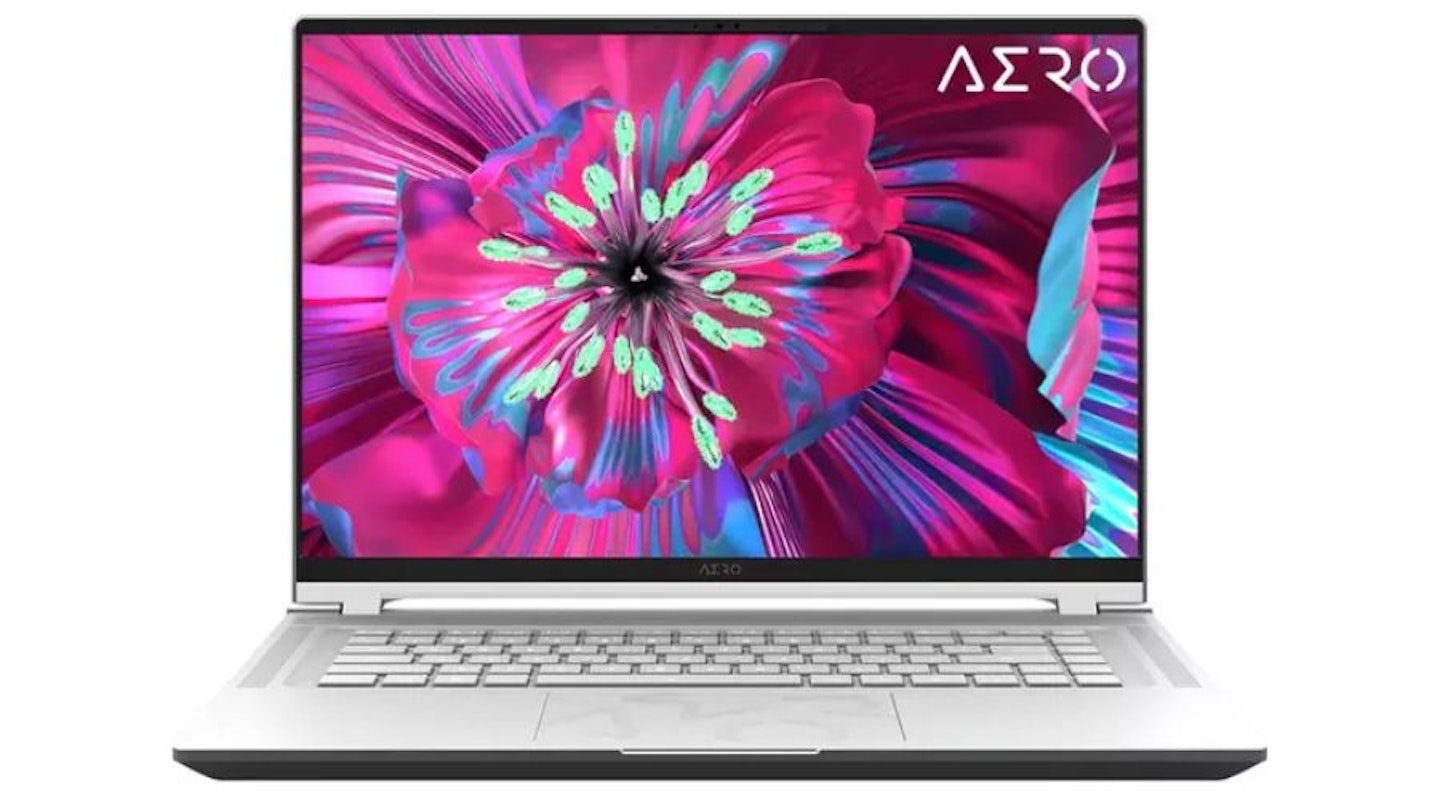 Gigabyte/Currys
Gigabyte/CurrysGigabyte is a premium computer brand, and this AERO 16 OLED laptop is a typically well-built and specified machine to join its range. As with many top-of-the-line laptops that are well suited for intensive graphics work, this is labelled as a gaming laptop. And that's certainly no bad thing - other than the extra weight involved. At over 2kg we don't think that this is the sort of machine you'd take with you in a backpack on a long photography trip, but it's portable enough to provide serious editing power no matter where you take it.
For us, the star features here are the amazing 4K OLED display panel and the blisteringly fast Intel i9 processor. So, you have a 16-inch screen packed with over a billion colours, stunning contrast and a massive resolution to play with. And you can do it all with enough power to support professional applications.
We have to say that, as good as the internal components are here, there are other laptops out there with a similar spec for a little less money. But, when you factor in the Gigabyte build, gorgeous 16-inch OLED display and the sheer processing power on offer here, we find this an ideal photography powerhouse.
Pros
- Astoundingly good Gigabyte build quality and high-end components for fast photo editing
- Beautiful 16-inch OLED display makes for editing colour and contrast with accuracy
- The Intel i9 processor is top-of-the-line for sheer computing power for your high-end apps
Cons
- Quite weighty, as expected for such a comprehensive spec
| CPU | Intel Core i9-13900H |
| GPU | Nvidia RTX 4060 (8GB) |
| RAM | 16GB |
| Storage | 1TB SSD |
| Display | 16-inch UHD+ OLED 60Hz, 4K |
| Battery life | Approx 8 hours depending on use |
| Dimensions | 35.45 x 1.8 x 27.2 cm |
| Weight | 2.1 kg |
Best 16-inch
For some photo editors, a 14 or 15-inch laptop isn't quite roomy enough. But this offering from Lenovo - the Yoga Pro 9i - has a little more room and some real plusses for photographers. The 3.2K resolution may not quite be full 4K, but it's still a massive advance on many others. Also, the panel itself is mini-LED technology - which means it's better than a standard screen for colour accuracy and contrast levels. Another plus is the inclusion of the Nvidia RTX 4060 graphics card - if you're a photographer who may aspire to videography, this would also make a great editing suite.
Spec-wise, the CPU is a super-fast Intel Core i9 - and it's joined by 32GB of RAM, so this laptop will support professional apps and RAW photo editing with ease. And that's backed up by the tuning of the machine to suit software like the Adobe Suite.
The battery life is a little wanting though, at only 6.5 hours - so, if you are planning to take this on a long off-grid trip, plan for your power needs. Lastly, we love the overall look of this laptop - it's smart and solidly built. It's weighty, but reassuringly so for a machine with this much raw power.
Pros
- The 3.2K resolution 16-inch display is a mini LED panel - colour accuracy and contrast are excellent
- Tuned by Lenovo for performance when using creative applications such as the Adobe suite
- The i9 CPU and 32GB of RAM are well above average, with enough power than most laptops in this price range
Cons
- Battery life is below average - so plan for your power needs
| CPU | Intel Core i9-13905H |
| GPU | NVIDIA GeForce RTX 4060 8 GB |
| RAM | 32 GB DDR5 |
| Storage | 1 TB SSD |
| Display | 3.2K mini-LED screen / 165 Hz |
| Battery life | Around 6.5 hours |
| Dimensions | 1.8 x 36.2 x 24.5 cm |
| Weight | 2.23 kg |
Best environmentally-friendly
While the Acer Aspire Vero AV15-53 might not be the slickest laptop on the market, it is one of the most reliable and environmentally friendly. But it achieves this without cutting corners when it comes to power. We're happy to see that this offers excellent hardware in an environmentally sustainable design - something few laptops do. And that's thanks, in large part, thanks to its brilliant 11th-generation i7 processor, 16GB of RAM and a whopping 1TB of SSD storage. That means you'll be running heavier applications like Adobe Photoshop without a hitch. It is, though, a little heavier than some at
Where this laptop truly shines, however, is its upgradeable design, manufactured to allow for complete disassembly. Should you grow tired of the Aspire Vero's CPU and fancy an upgrade, you certainly have the option.
This sustainable, environmentally-friendly design is fantastic for reducing tech waste and lessens the need to upgrade every couple of years or so, it's a real win-win - for you and the planet. But, best of all, the Acer Aspire Vero undoubtedly delivers ample performance for your photo editing needs.
Pros
- A large 15.6-inch display - ideal for editing photos
- Great environmental credentials - including easy upgrades and disassembly
- Excellent RAM, CPU and SSD storage for a slick editing experience
Cons
- The chunky, heavy design
| CPU | Intel Core i7-1355U |
| GPU | Intel Integrated |
| RAM | 16GB |
| Storage | 1TB SSD |
| Display | 15.6-inch full-HD screen |
| Battery life | Up to 12.5 hours |
| Dimensions | 36.34 x 1.79 x 23.84 cm |
| Weight | 1.74 kg |
How to buy the best photo editing laptop for you
Consider your needs
Screen size: If you're used to working on a large computer monitor for your image editing, you will need to consider the size of the laptop screen. To be a useful machine, especially out in the field, that screen will need to be comfortably large enough to work on. Obviously, if you're taking your laptop with you to a home office setup, you can connect an external monitor, but for all other uses, you'll need to make sure you have enough space to work with. Not all photographers want or need giant 17-inch laptop screens though, as a 14-inch display can be perfectly usable for most.
Portability, weight and durability: Less of a concern for photographers who edit their work from home, the overall build of the best laptops for photo editing is hugely important. Being able to stow this with your camera gear and go on an outdoor adventure for those landscape and wildlife shoots is essential - so the size, weight and durability come into play. If this is important to you, check a laptop's specifications - including any special build aspects like military-grade durability.
Battery life: Once again, being out and about while doing power-intensive tasks like editing photos will drain your battery faster than with general web use. We always take the stated battery life as an average, so if you find a laptop with a long life (over 10 hours is exceptional) check user reviews to get a more accurate gauge of the battery life.
Laptop versus tablet
Tablet computers are something of a temptation for photographers as they can have large screens, pen or stylus support, and are lighter than many laptops. However, you'll pay a lot more for a tablet with enough raw power to handle heavy image editing. A laptop can also have a longer battery life and larger screens. That said, if you're undecided between laptops and tablets, there are many touchscreen laptops that are effectively hybrids between the two.
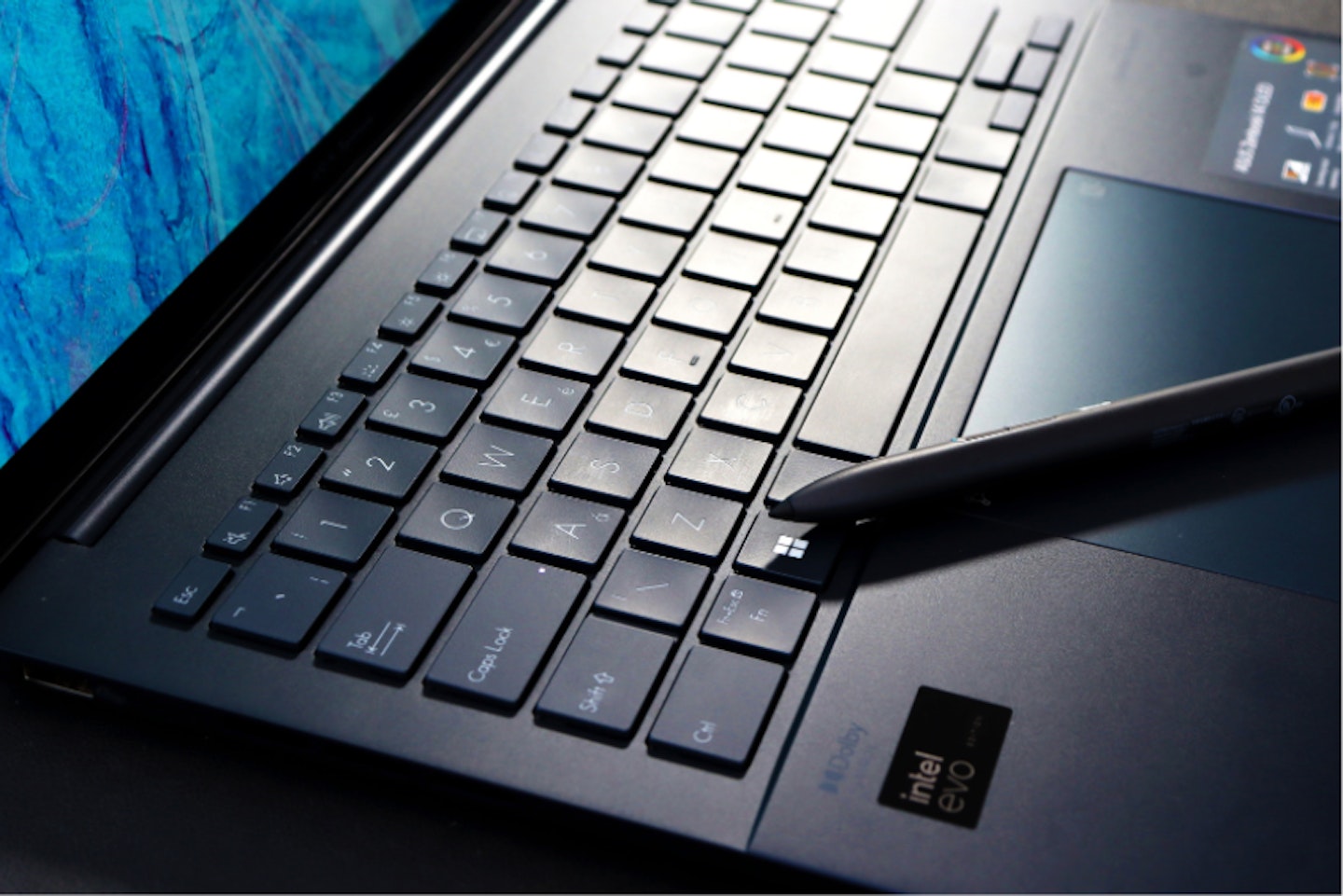
Jargon Buster
CPU: The central processing unit is responsible for your laptop's overall performance. If you multitask or keep many windows and tabs open at once, a good CPU will keep your laptop running smoothly.
GPU: The graphics card of your laptop. It's mostly relevant for gaming, but certain creative programs will also benefit from it. If you want good FPS during gameplay, prioritise this.
RAM: The random-access memory of your laptop. It acts as a temporary memory that retains data that the storage does not. Good RAM helps prevent slowdown, and gamers and editors will likely want 16GB or more.
Storage: The total capacity of your laptop. For editing purposes, you'll want a fair bit of storage. Around 512GB is good, but 1TB is even better.
FAQs
Are laptops good for photo editing?
Laptops are great for photo editing thanks to their excellent performance, ultra-lightweight designs and high storage capacity for all of your favourite apps. With a lot of power under the hood, the most obvious advantage over traditional high-end computers like the best PCs for video editing is portability.
Regardless of whether you're an amateur budding photographer or a first-rate professional, you'll find there are no limitations to using a laptop providing you choose wisely. The screen is paramount though - and some cheaper laptops come with screens that are lacking in colour accuracy and contrast - thankfully the ones we've listed here are all excellent for viewing and editing photos.
That said, when it comes to hardware, you really don't need all that powerful of a machine for photo editing when compared to high-end gaming or video editing laptops.
What are the minimum hardware requirements to run Adobe Photoshop?
To run Adobe Photoshop, and run it well, you'll need at least 8GB of RAM, but 16GB is preferred. You'll also need a recommended 100 GB of SSD storage for the installation. As for the processor, Adobe recommends a multicore Intel or AMD processor (2 GHz or faster processor with SSE 4.2 or later) with 64-bit support. Your graphics card should support DirectX 12 or higher with at least 4GB of onboard GPU memory.
For optimum performance at higher resolutions, however, you might want to invest in at least 32GB of RAM and have up to 1TB of storage. An external SSD is ideal for moving photos between systems too. As you take more and more photos you'll definitely be thankful for that extra space.
Are gaming laptops good for photo editing?
The ultimate gaming laptops are the perfect devices for photo editing - they've got heaps of performance power thanks to their dedicated GPUs and excellent CPUs, as well as plenty of storage for photos. Their only downside is their extra heft, in no small part thanks to their dedicated graphics cards and extra cooling features. But it's worthwhile to have that extra power if you happen to be a photographer who loves to game or even wants to branch out into video editing.
Why should you trust us?
At What's The Best, our mission is to provide accurate and reliable reviews, ensuring our readers receive honest and transparent information about the best technology products available. Anything less would undermine our commitment to being a trusted source of unbiased product information.
Our dedicated in-house writing team comprises experts with extensive experience and a genuine passion for technology. Collectively, we have spent decades testing and writing about tech, leveraging our expertise in all our articles, advice pieces and reviews.
We maintain complete editorial independence and do not accept payment for product reviews. Our writers have full control over their content, ensuring that products are selected based solely on the needs of our readers. While we may earn commissions or other compensation from links on our website, this never affects our product choices. These links enable us to continue offering valuable consumer advice, without compromising the integrity of our reviews.
Chris Duffill is a Senior Tech Writer and Reviewer for What's The Best. His background includes writing, editorial, marketing, design, video production and photography.
He specialises in home entertainment and audiovisual tech, including speakers, amplifiers, turntables, streaming media players, and TVs. He is also one of our resident experts in computing (PCs, tablets, smartphones, smartwatches), DSLR photography and all kinds of digital cameras. He also writes about retro gaming, game consoles and various electronic gadgets. If it plugs in, lights up or makes a noise, he’ll write about it.
Subscribe to the What’s The Best Newsletter to keep up to date with more of the latest reviews and recommendations from the rest of the What’s The Best team.
